RARE! Original NASA 1969 Apollo 9-12 Mission "Spacecraft Recovery Chart" Department of Defense (DoD)
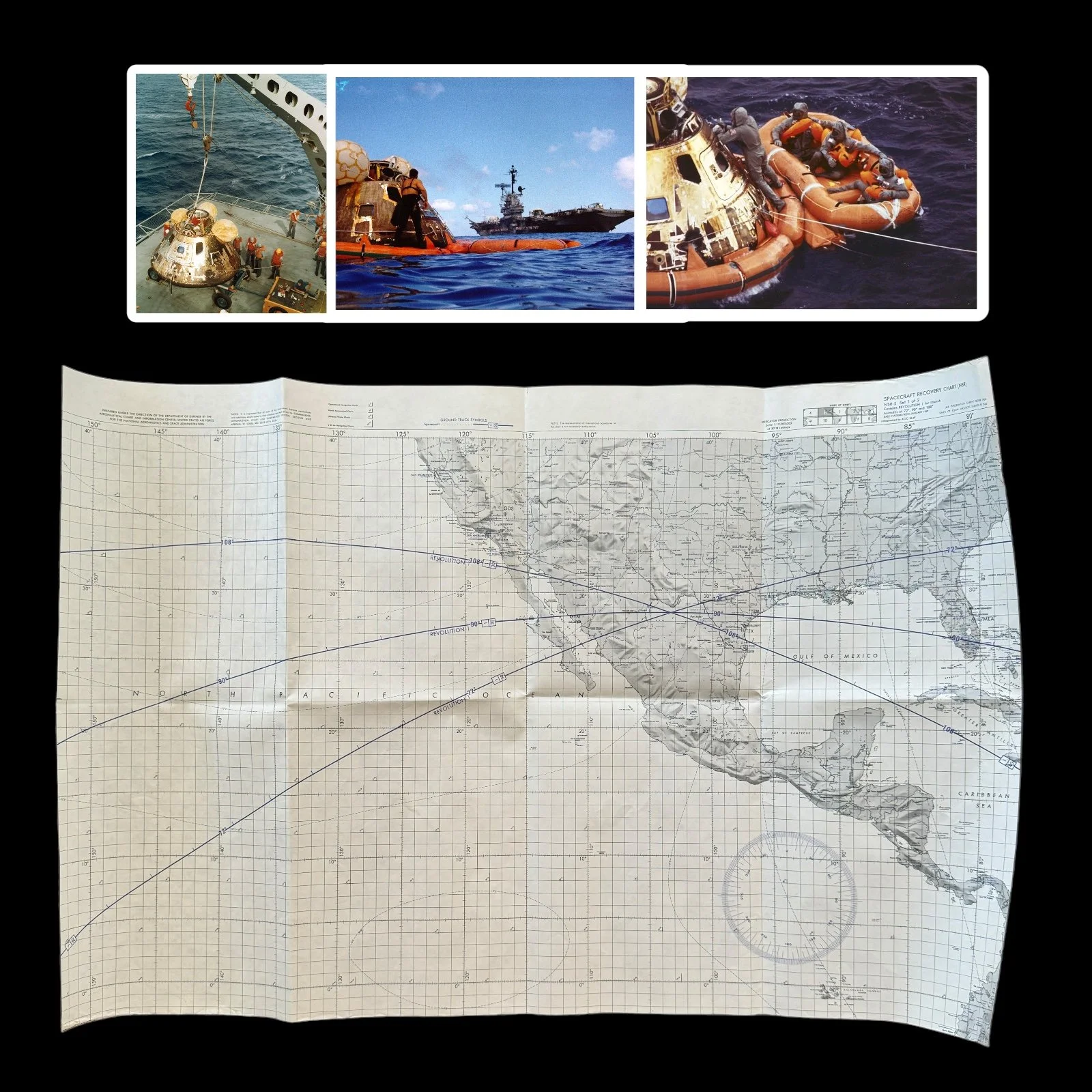
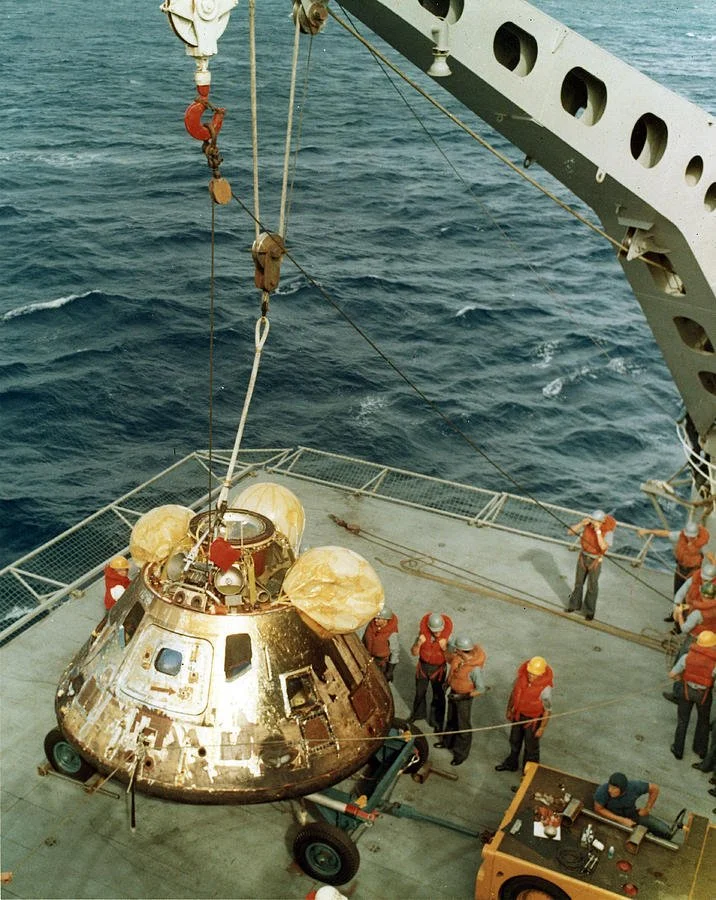
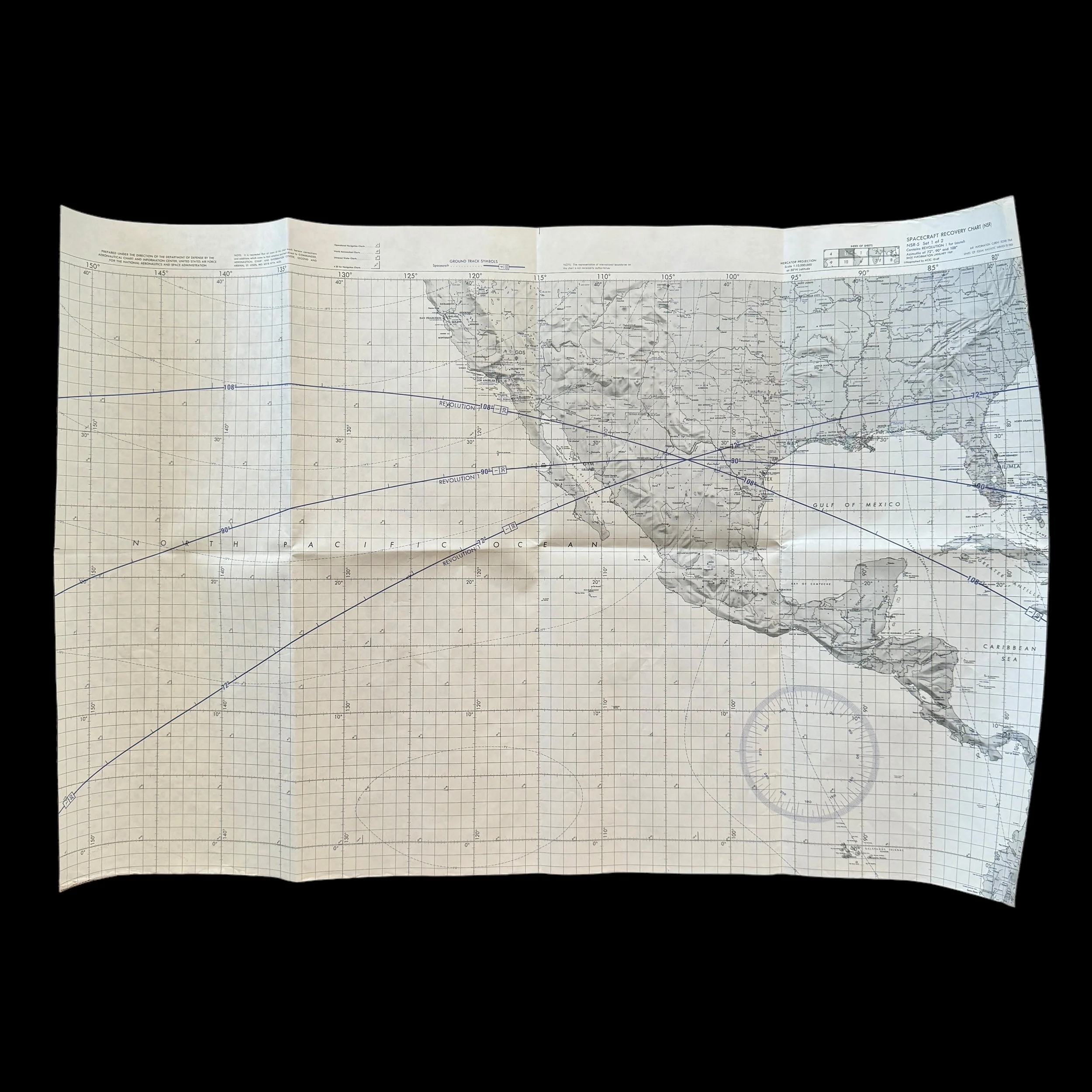
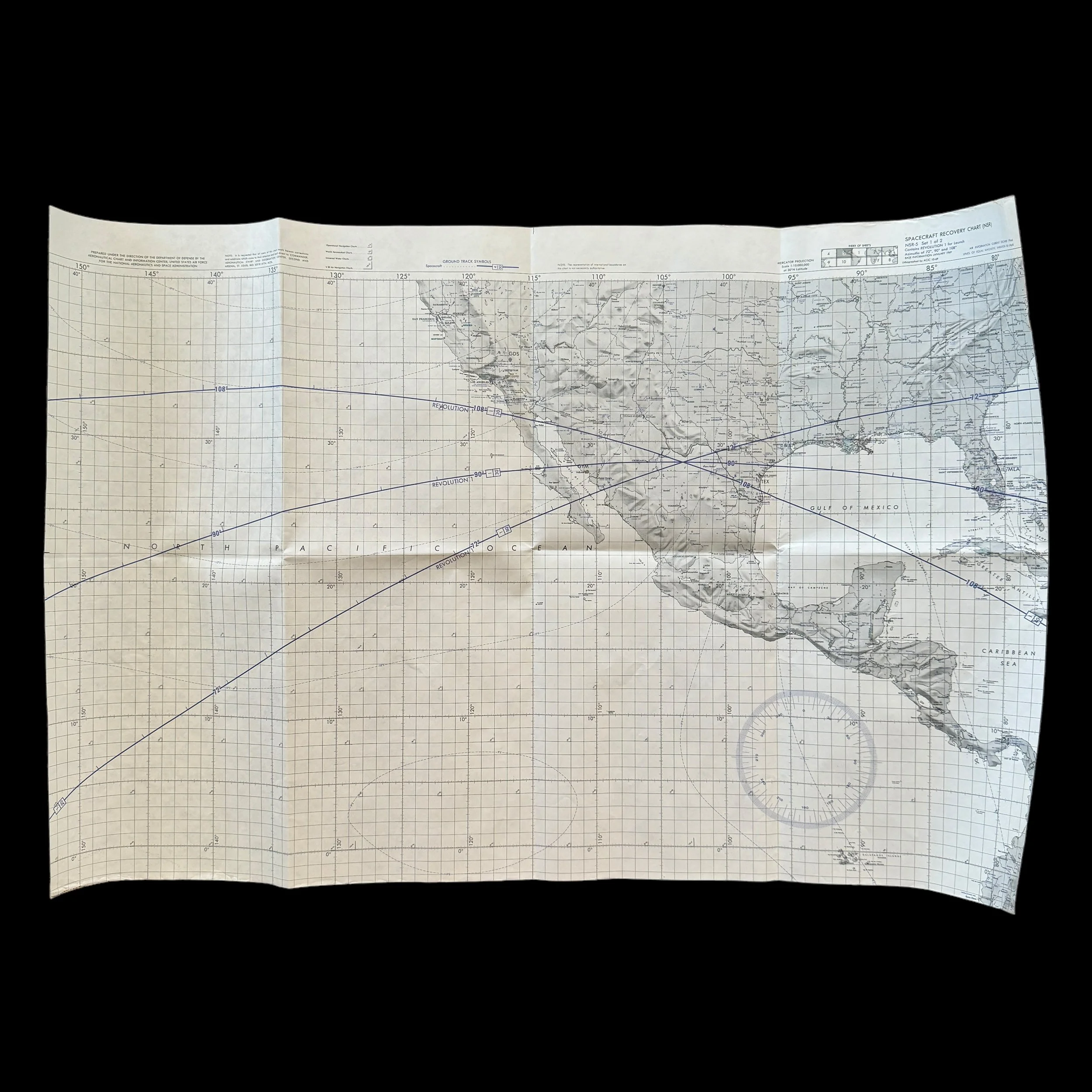
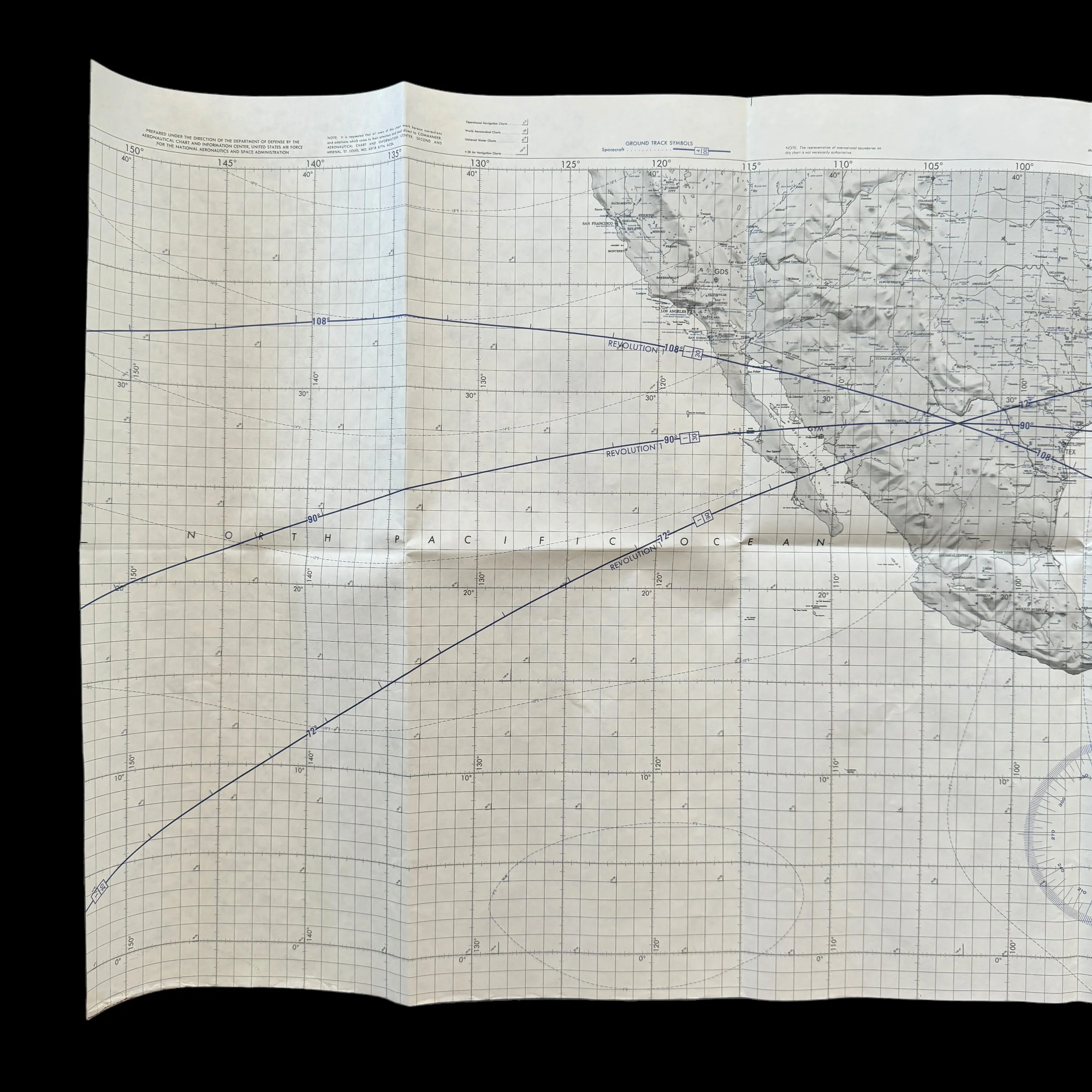
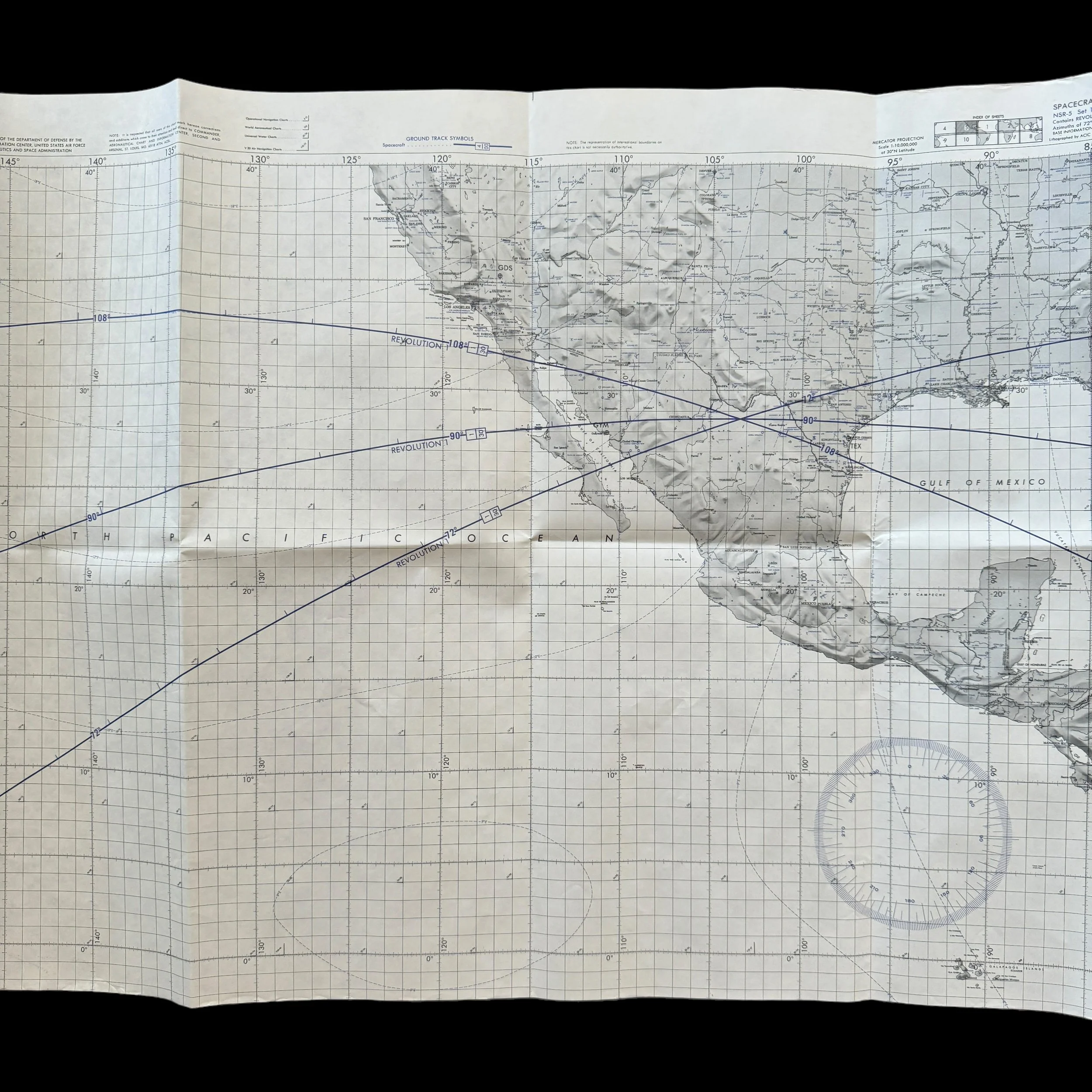
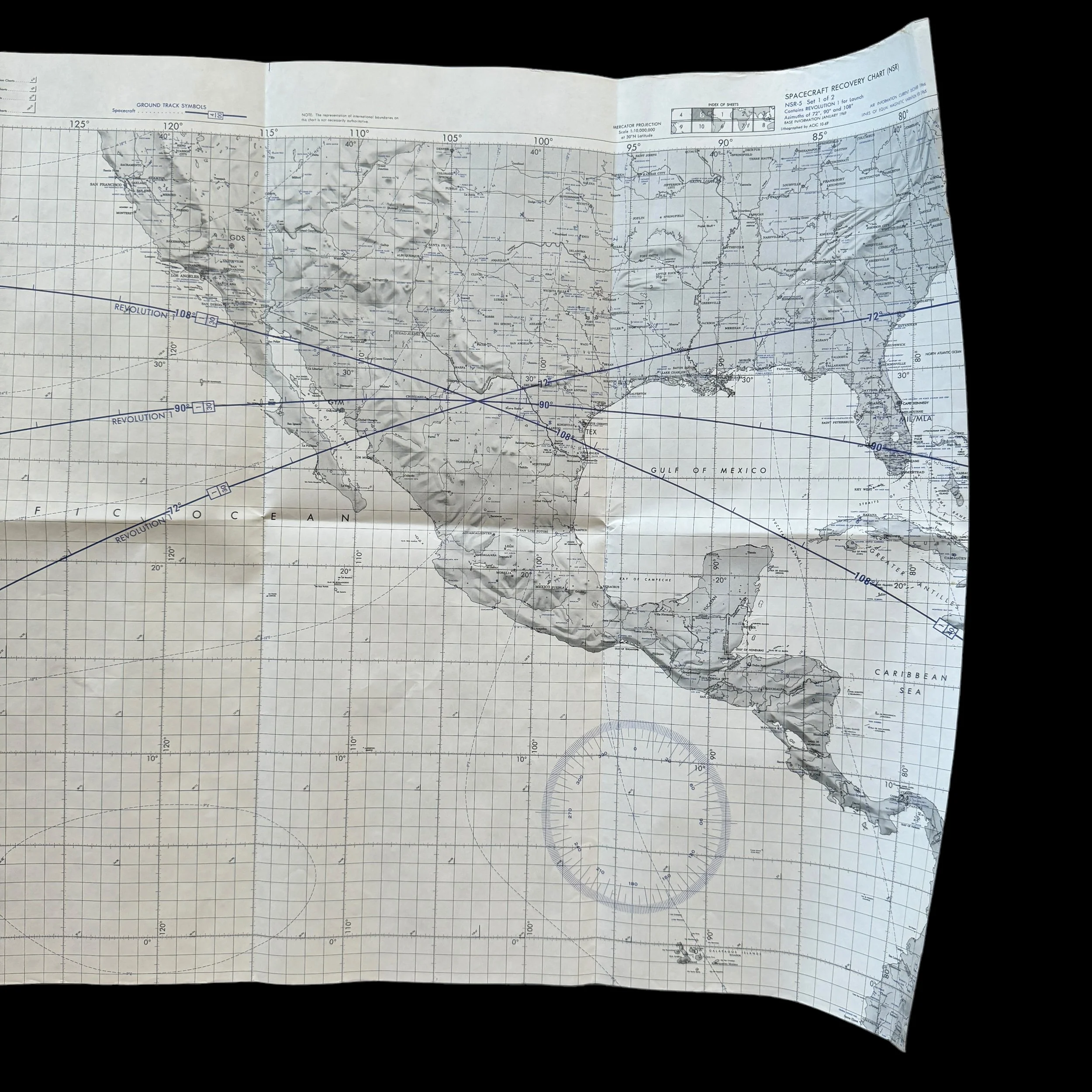
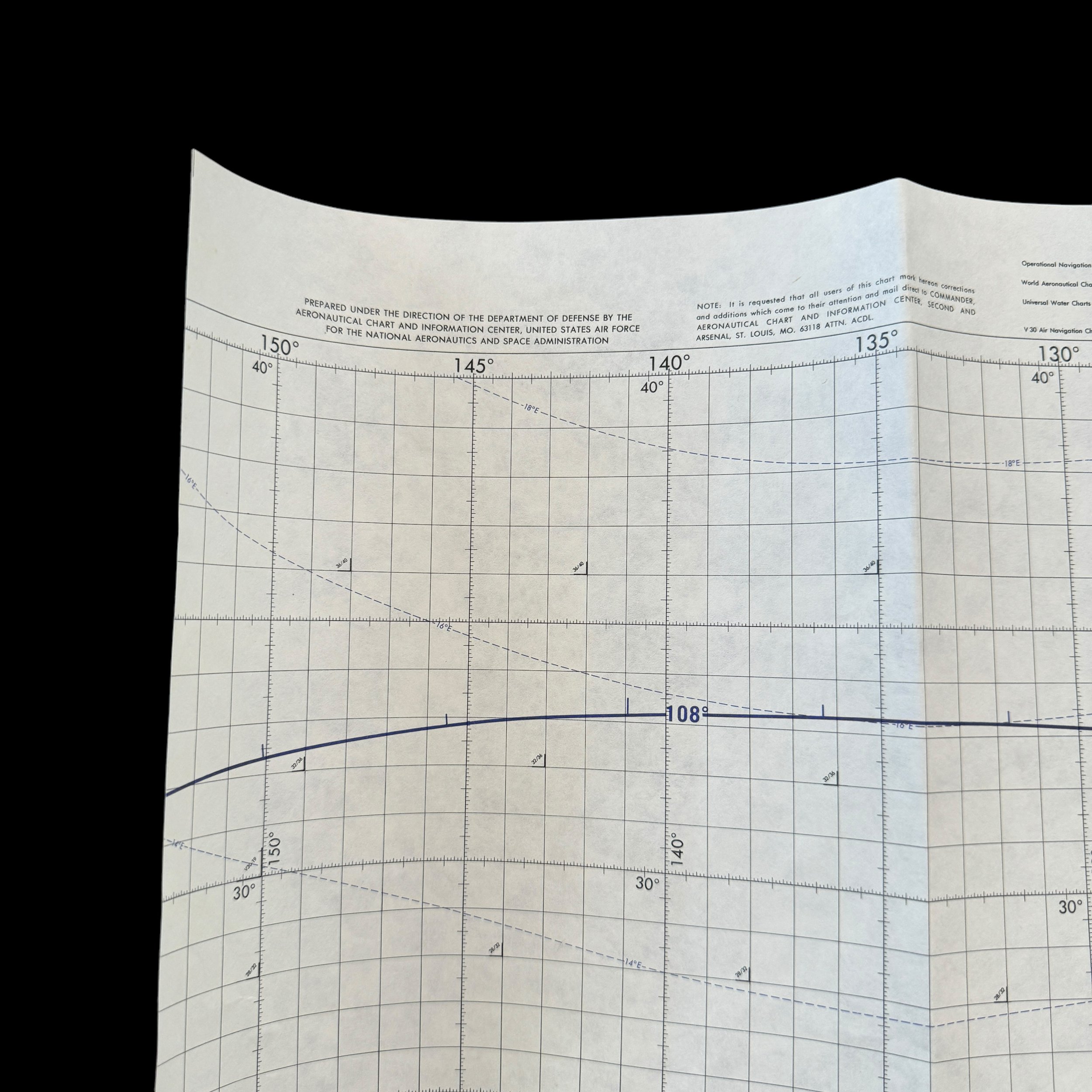

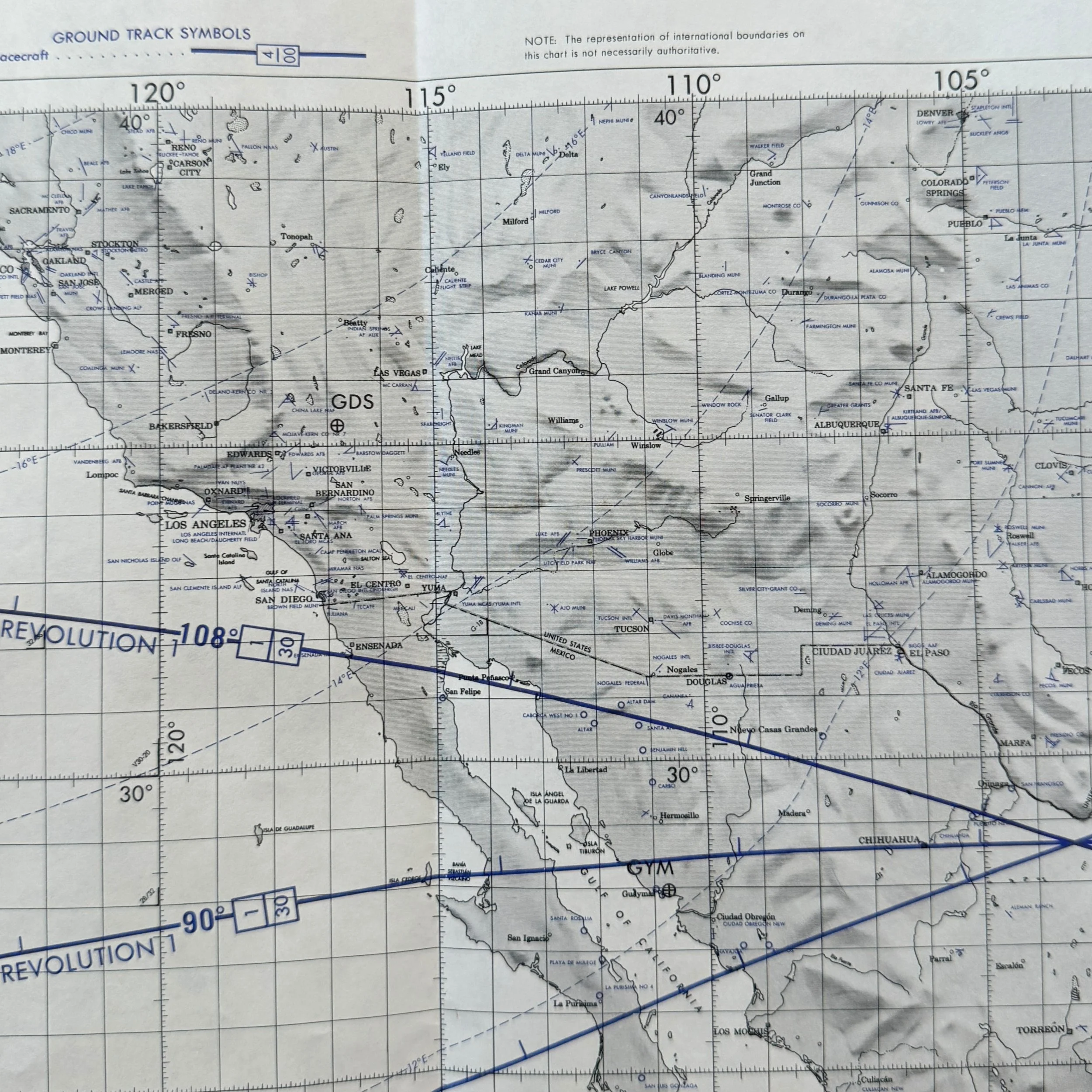
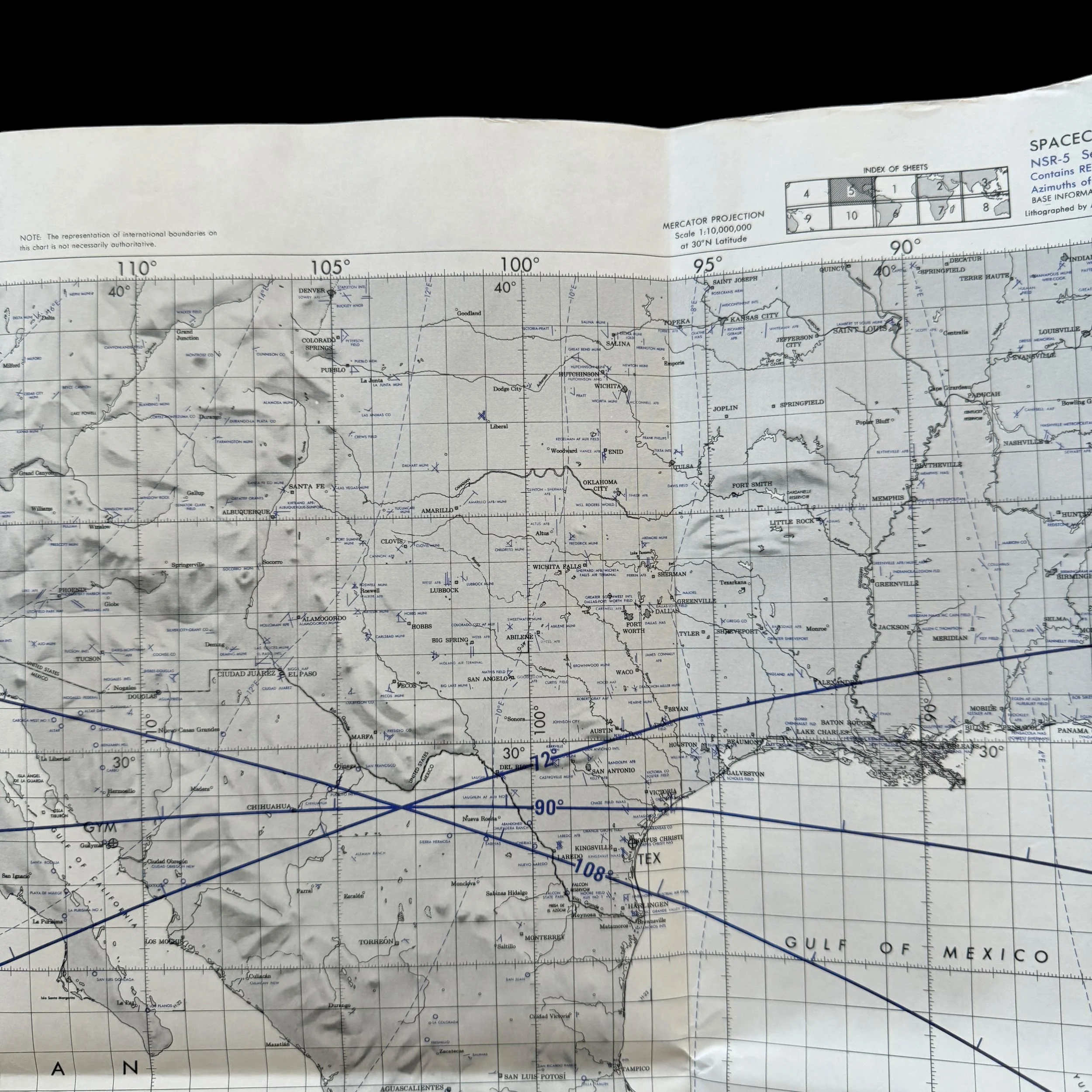
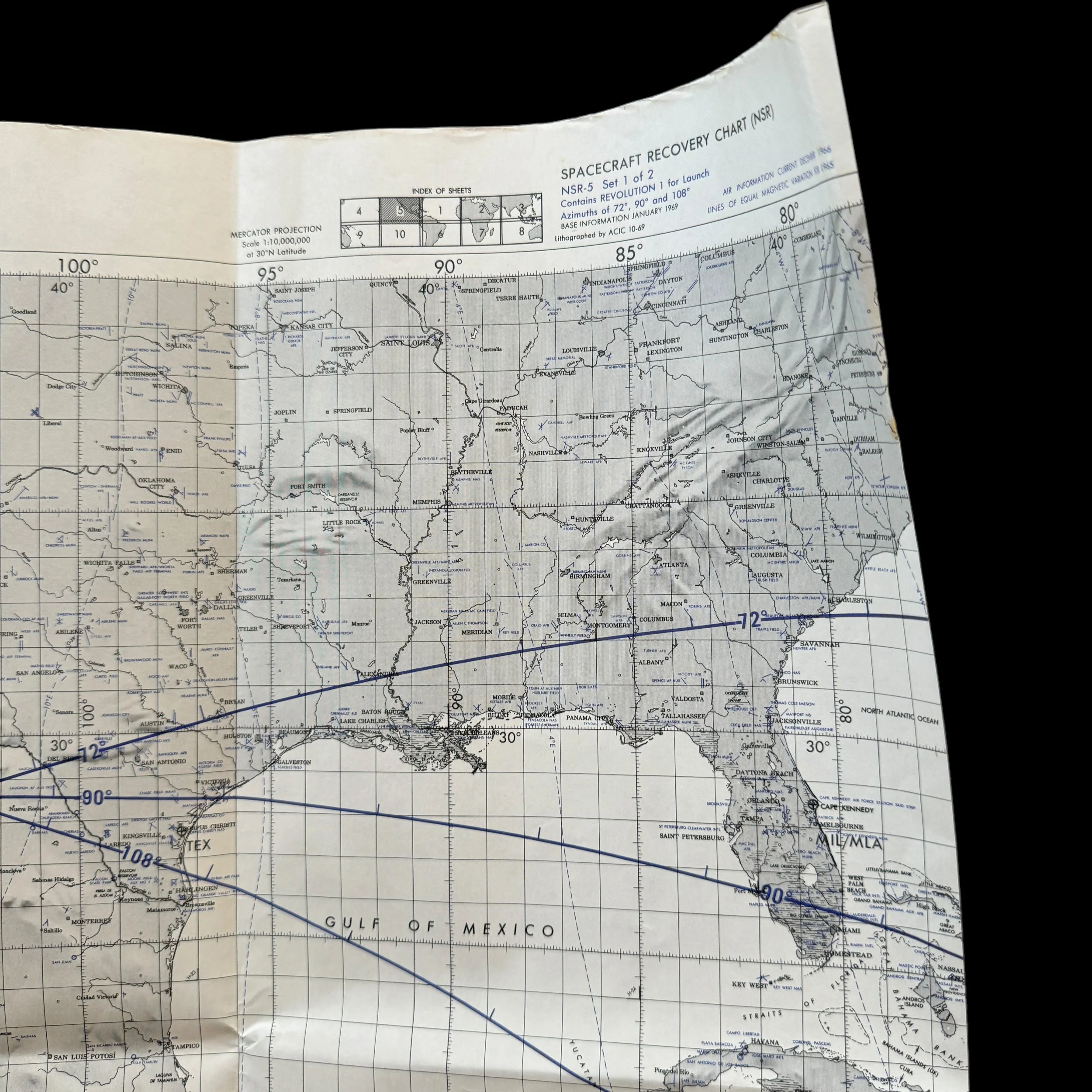
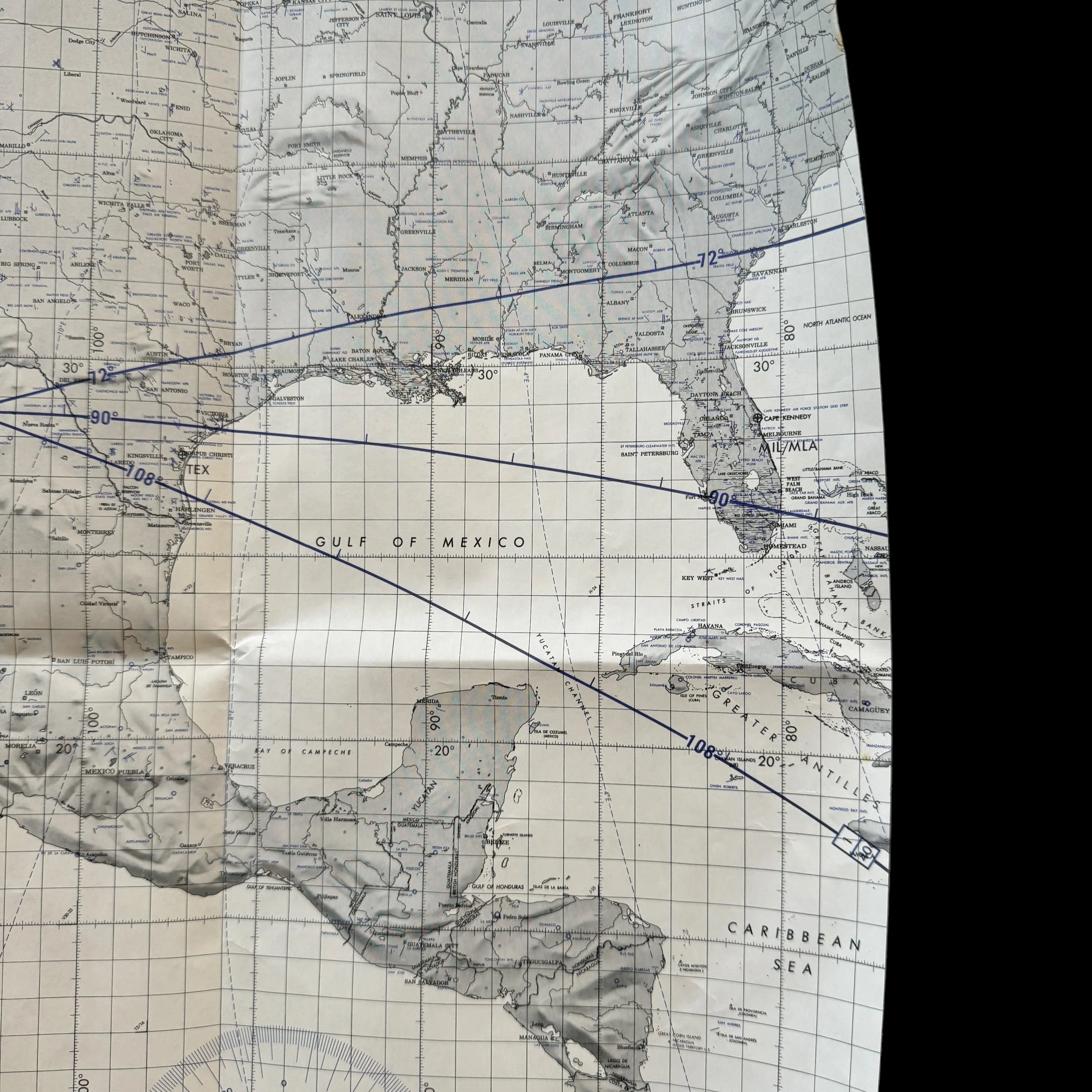
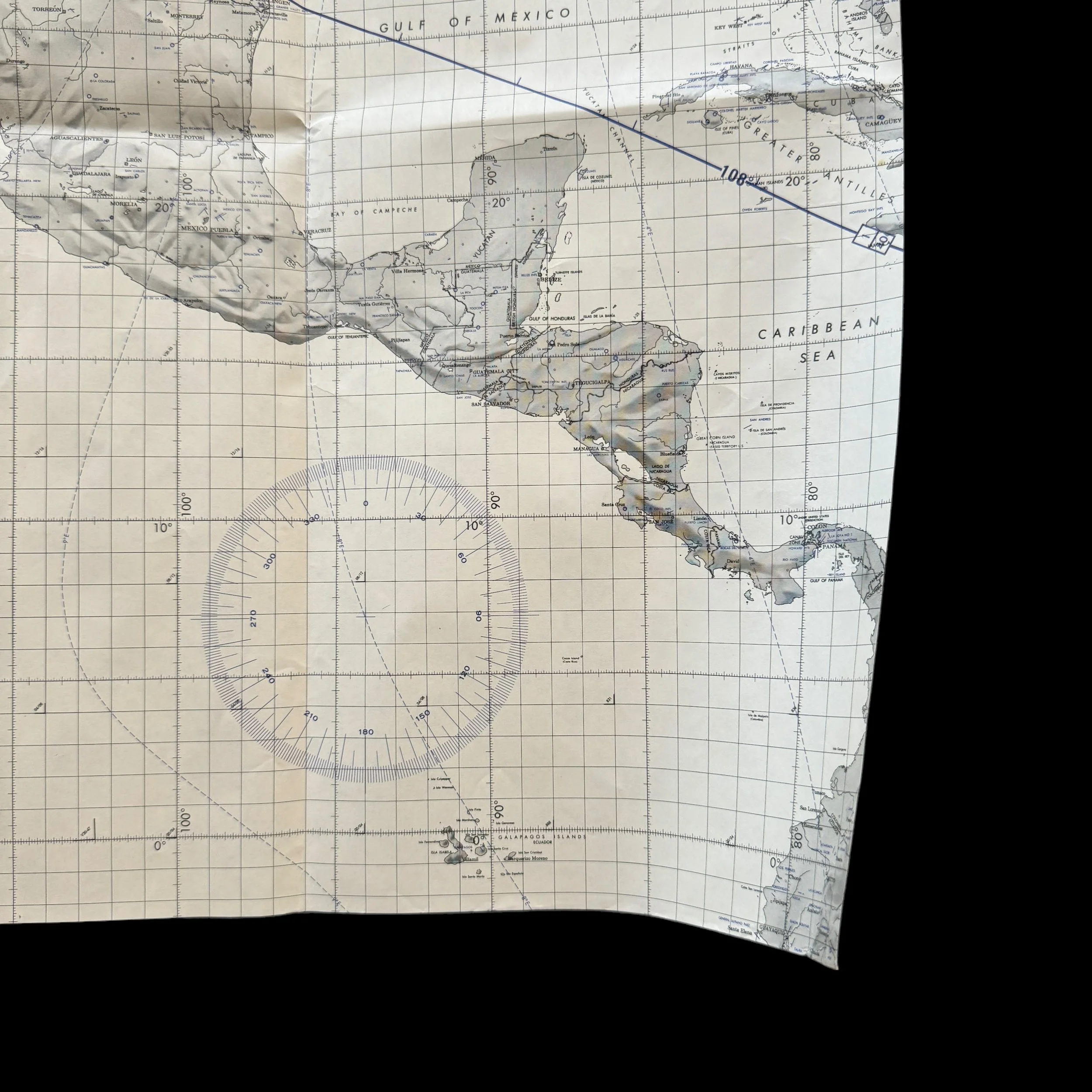
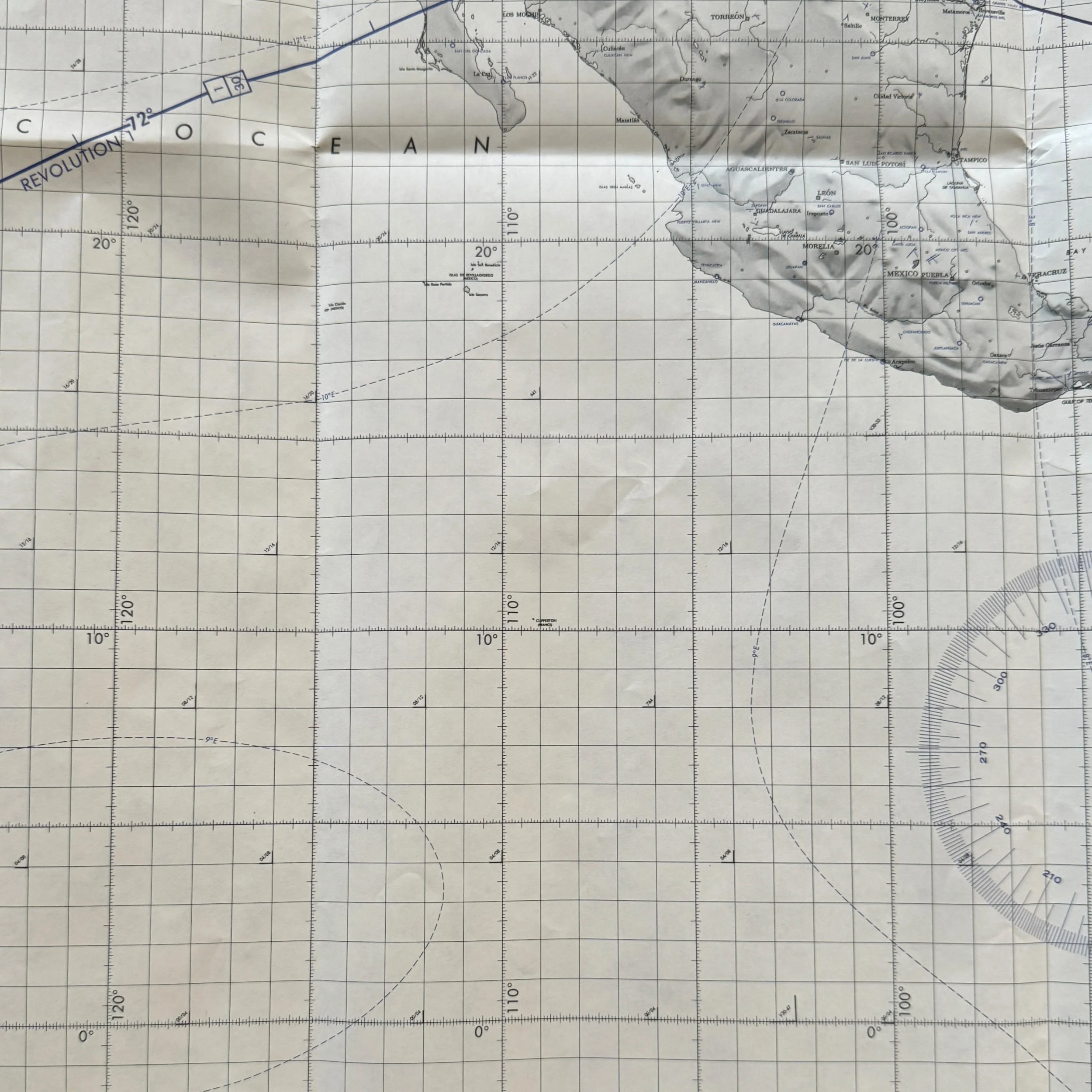

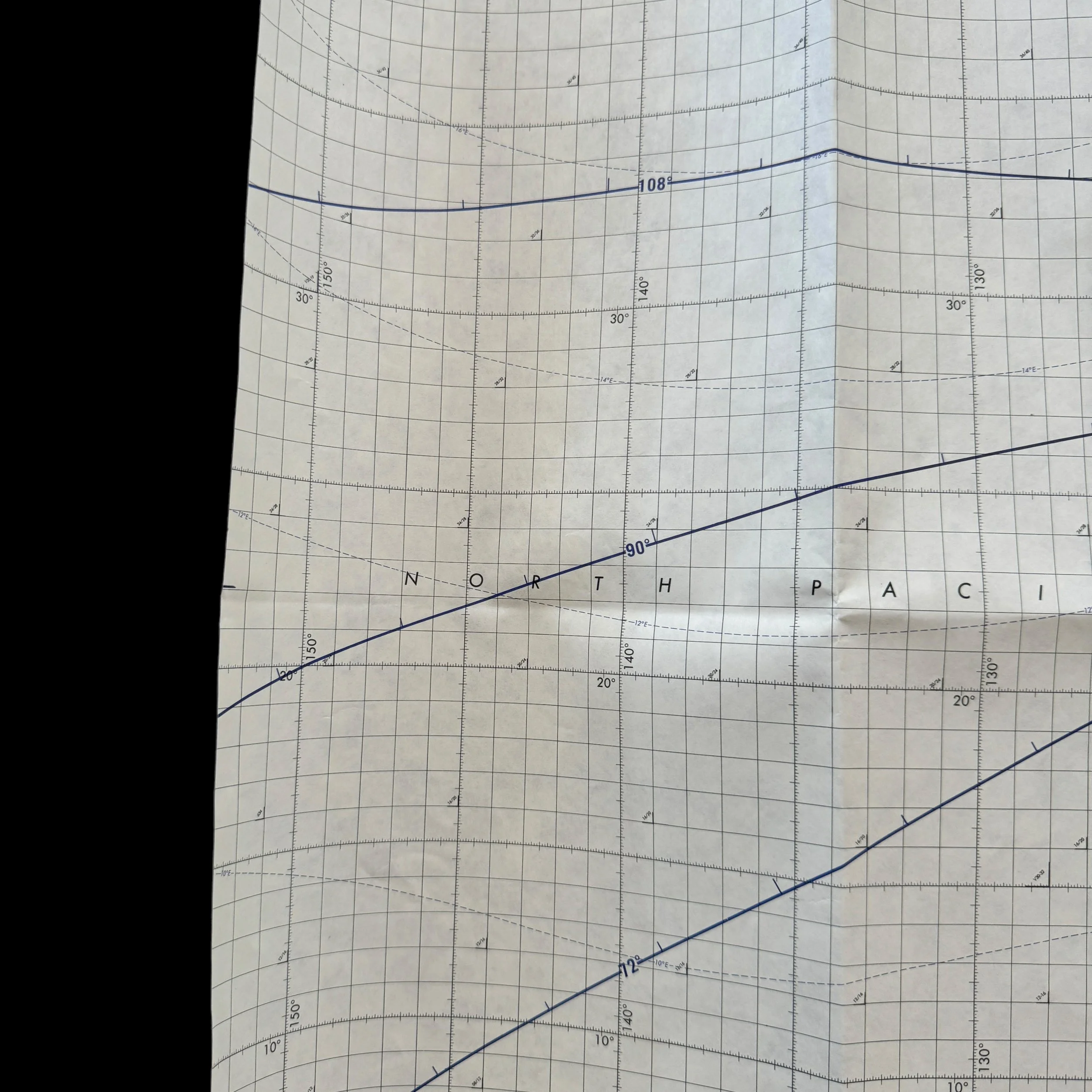
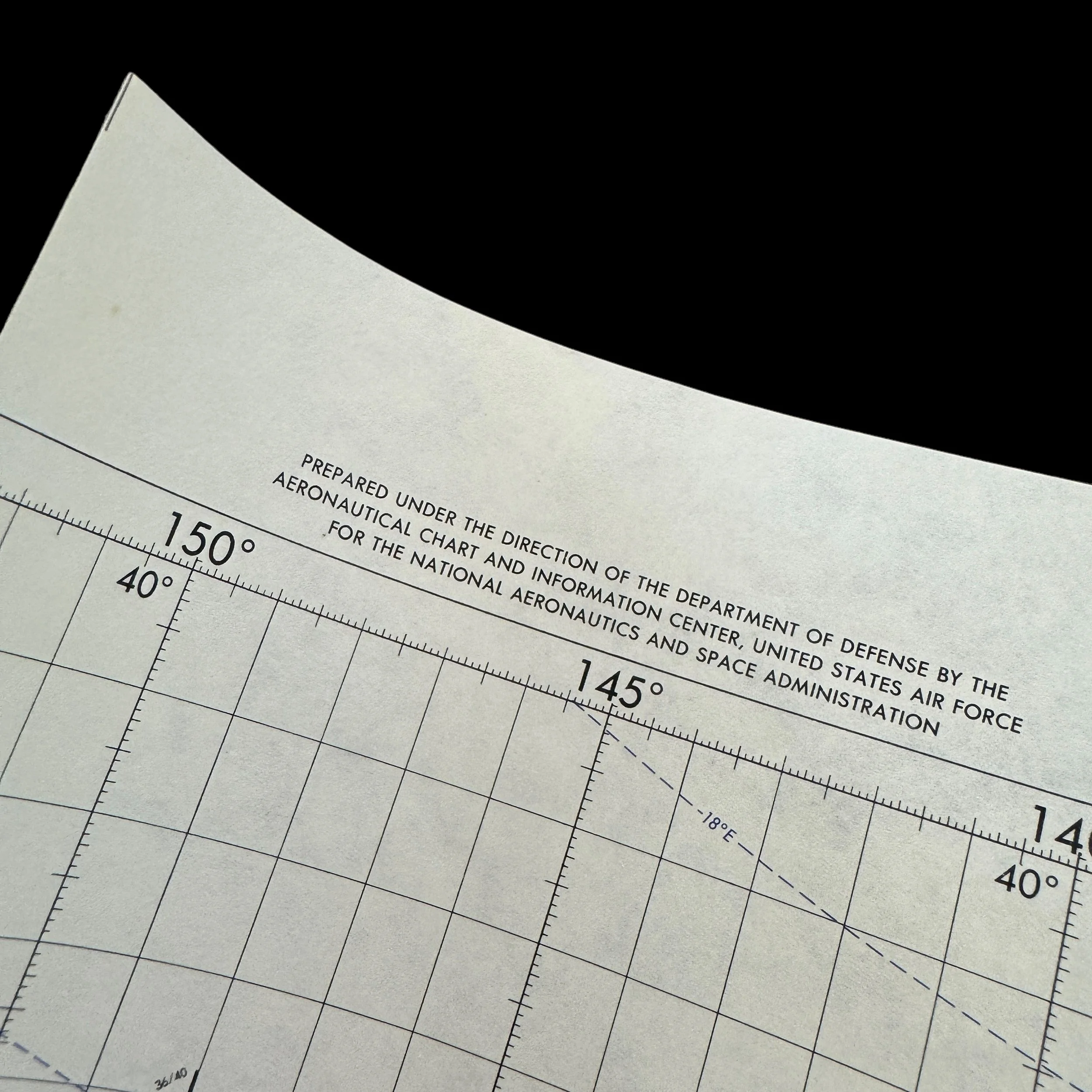
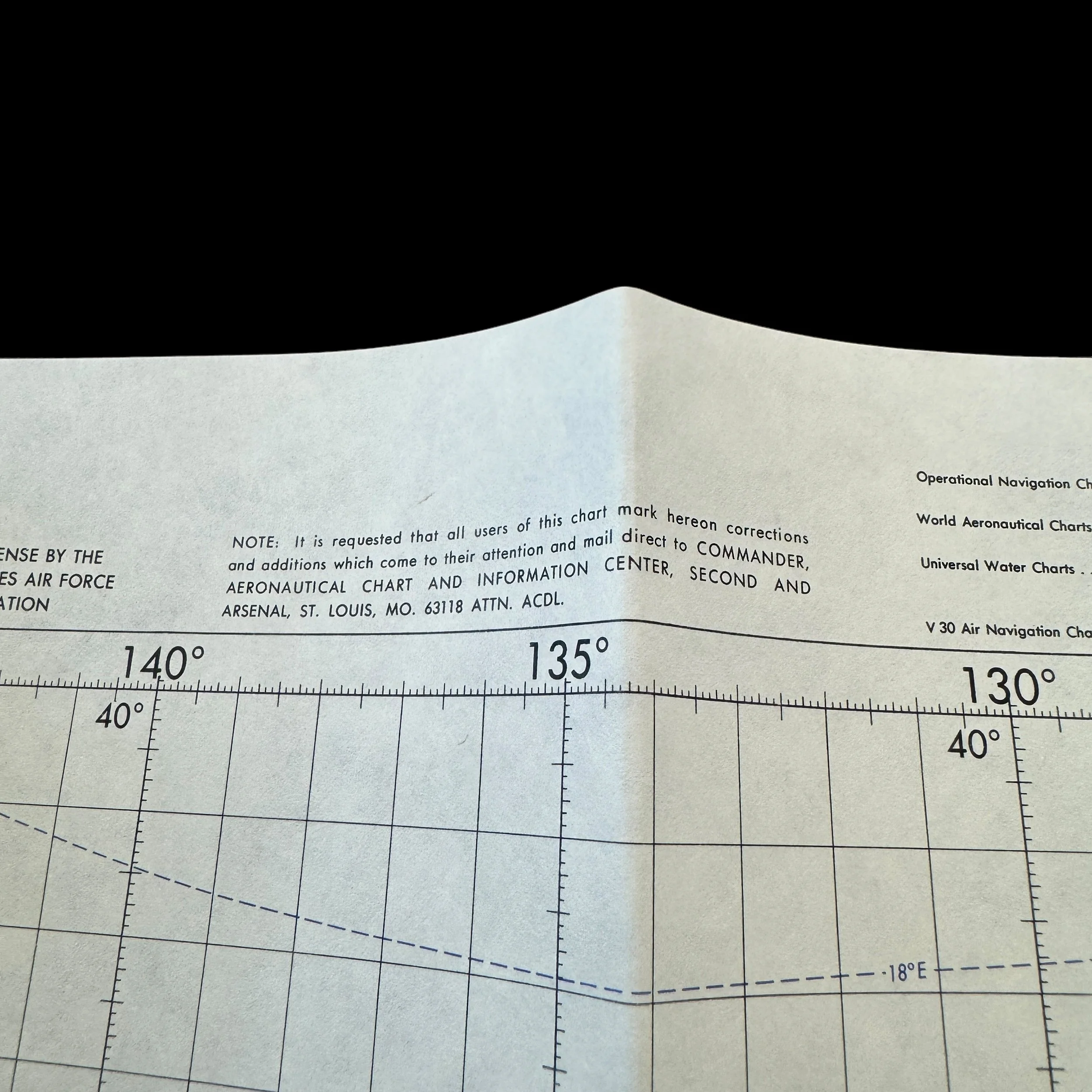
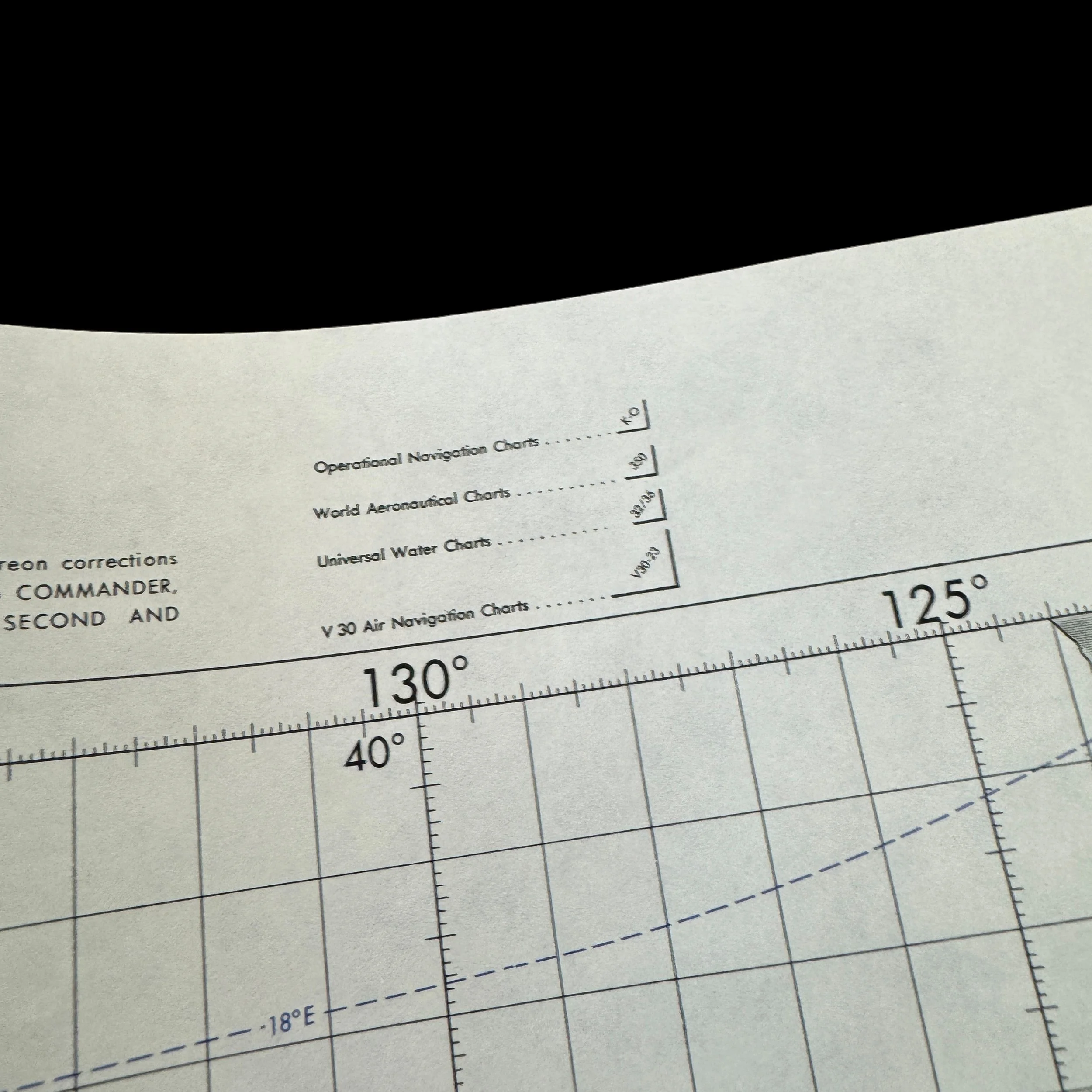
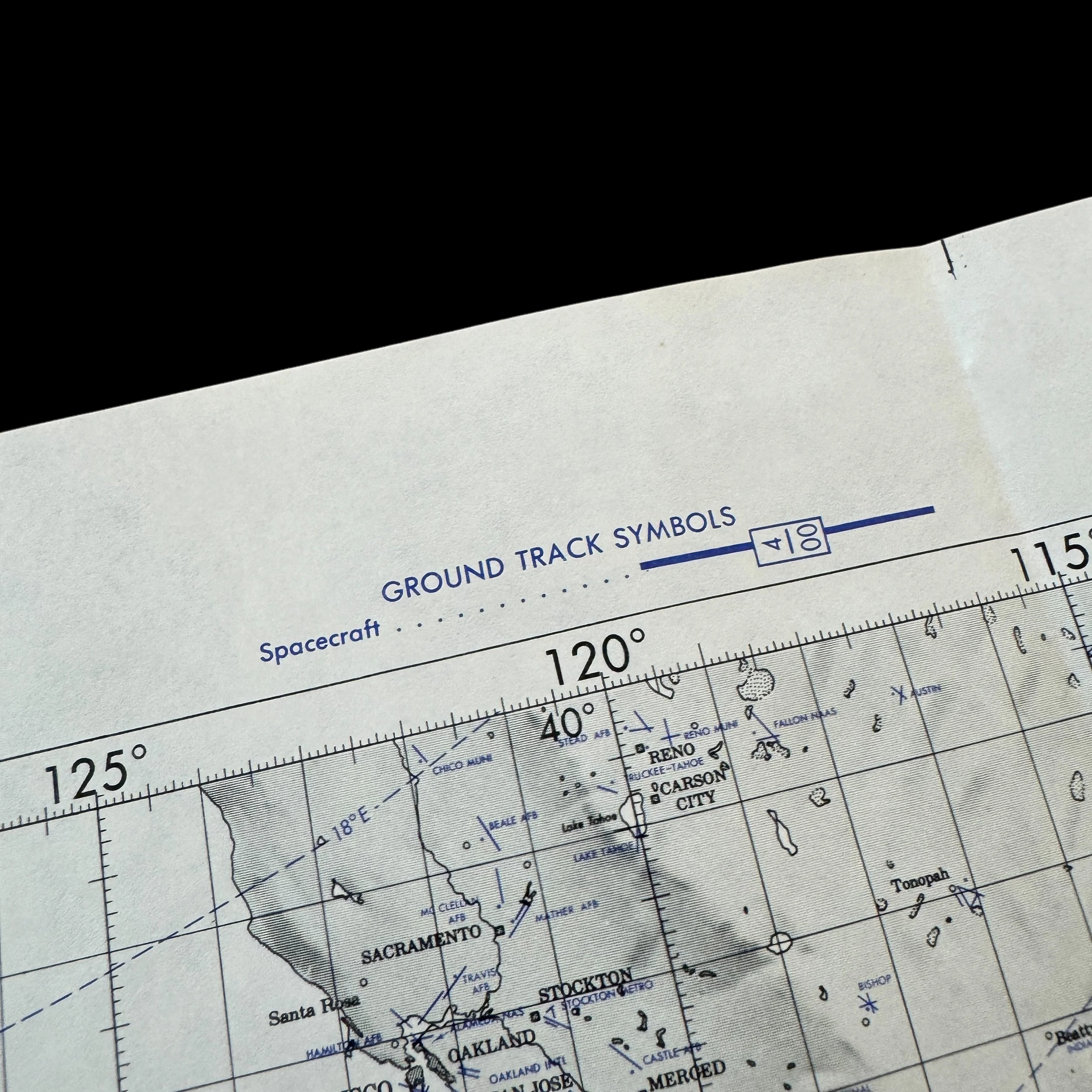
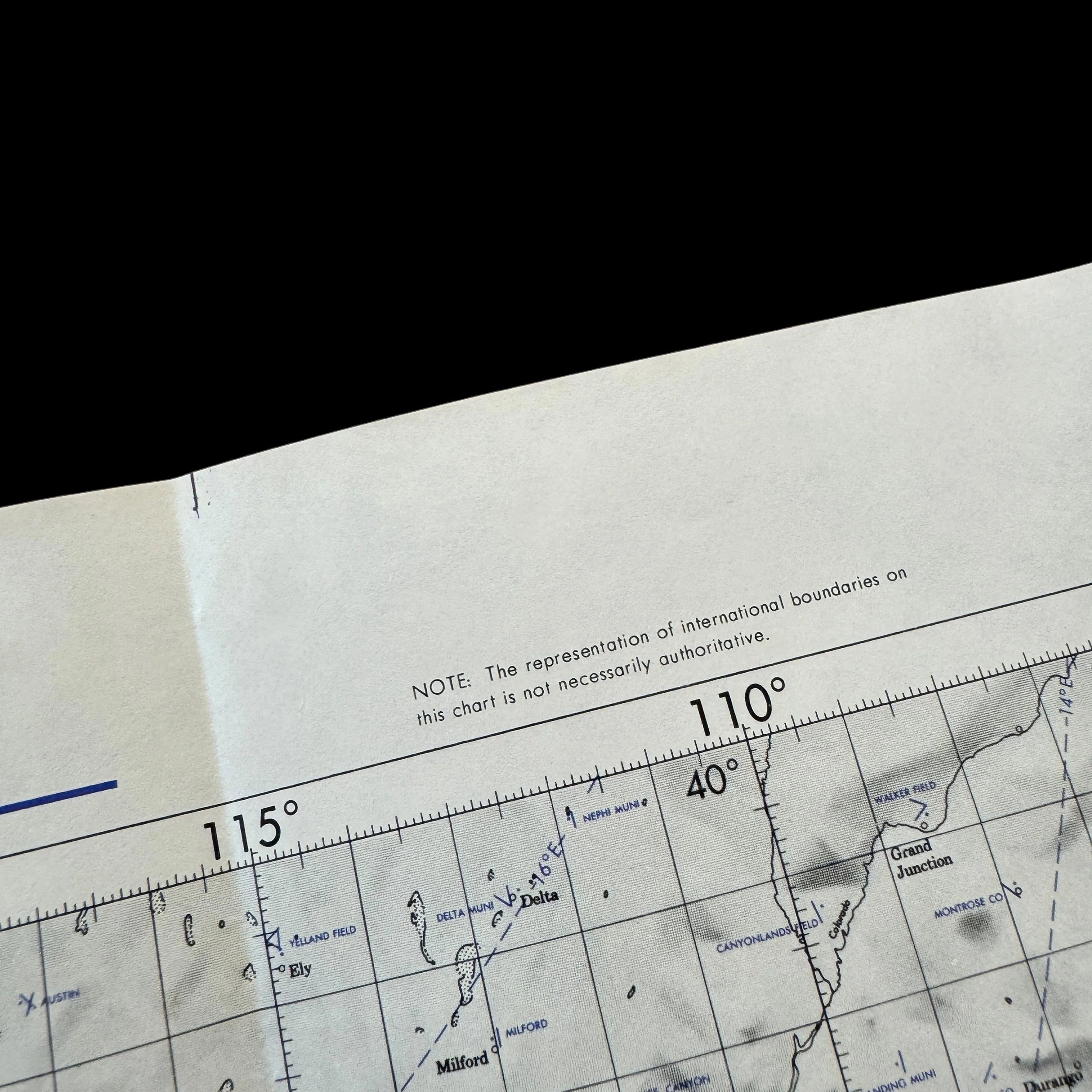

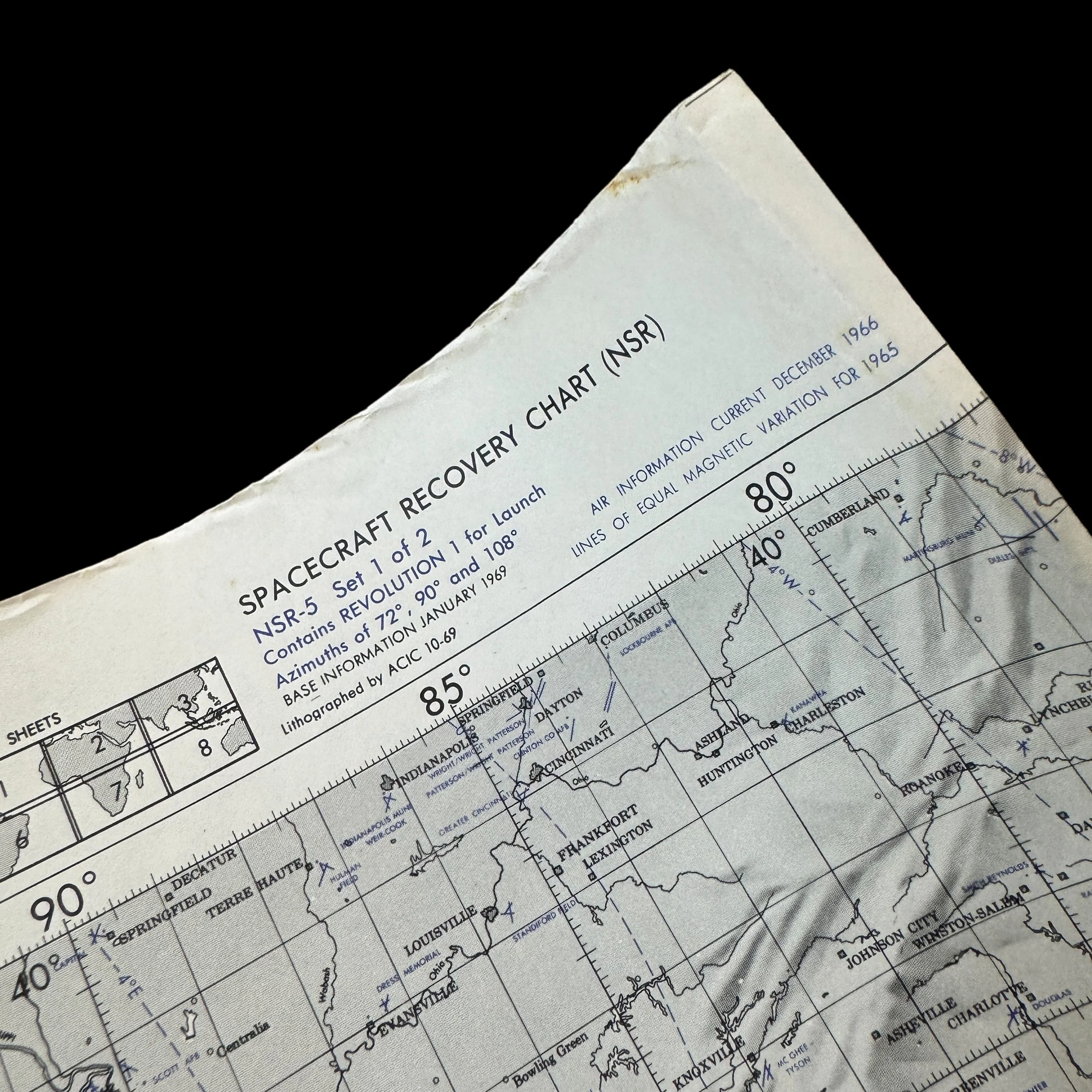
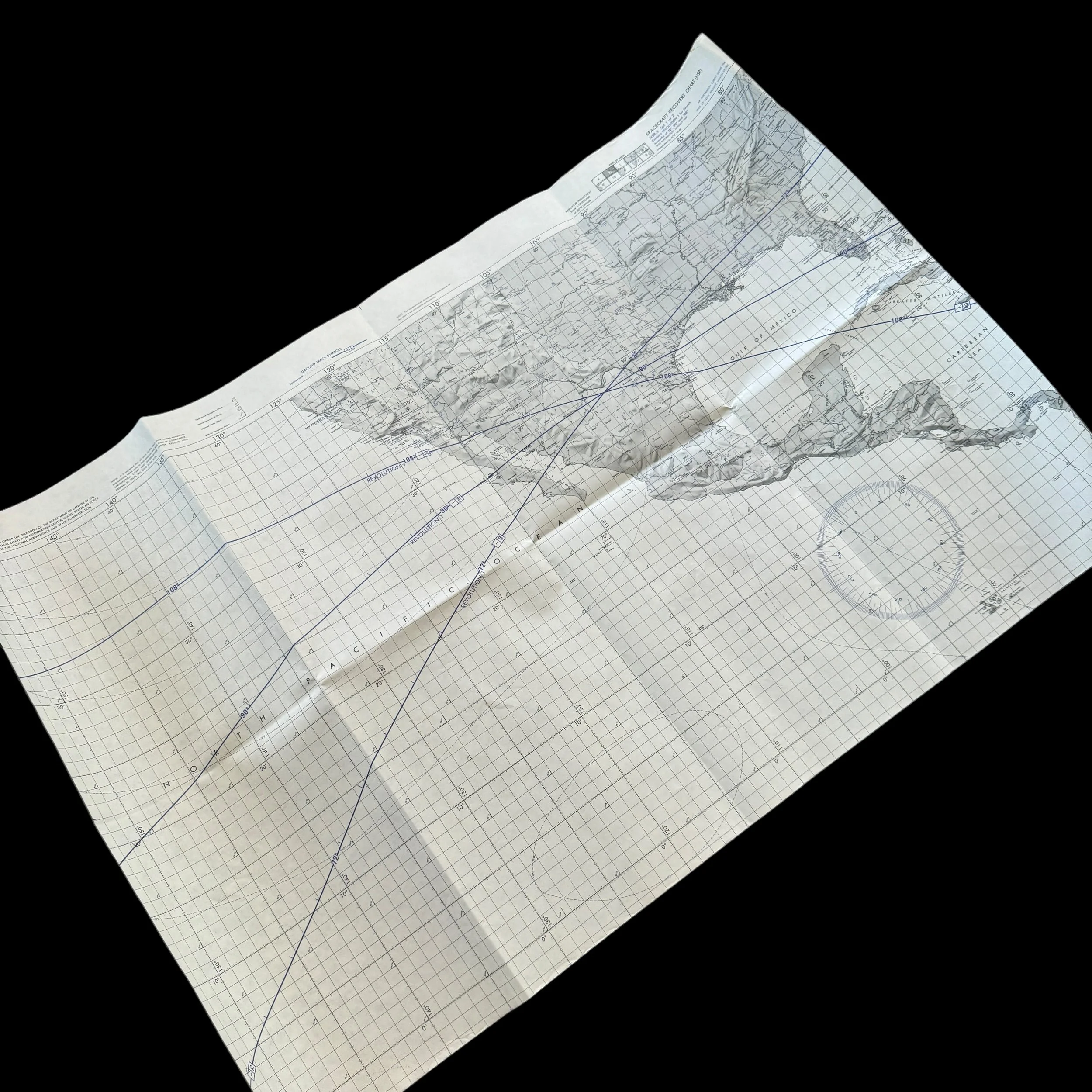






RARE! Original NASA 1969 Apollo 9-12 Mission "Spacecraft Recovery Chart" Department of Defense (DoD)
Comes with a hand-signed C.O.A.
Size: 19 x 28.5 inches
This extremely rare and museum-grade 1969 Apollo Program artifact is an original "Spacecraft Recovery Chart" used for the Apollo 9, Apollo 10, Apollo 11, and Apollo 12 splashdown and spacecraft recovery operations. Prepared under the direction of the Department of Defense for the National Aeronautics and Space Administration, this Apollo 9-12 mission Spacecraft Recovery Chart was essential in the recovery of Apollo rockets, debris, and the final splashdown of astronauts.
FULL HISTORY:
The Apollo program stands as one of the most monumental achievements in human history, marking the first time humans set foot on another celestial body. Central to the success of these missions were not only the launch and lunar landing operations but also the precise recovery of the spacecraft and astronauts upon their return to Earth. The recovery operations, particularly the splashdown and retrieval of the command modules, were meticulously planned and executed with the help of Spacecraft Recovery Charts, which were prepared under the direction of the Department of Defense (DoD) for the National Aeronautics and Space Administration (NASA). These charts were vital in ensuring the safe and efficient recovery of Apollo spacecraft from missions Apollo 9 through Apollo 12.
The Importance of Spacecraft Recovery Operations
After completing their missions in space, the Apollo command modules had to re-enter Earth's atmosphere and splash down in the ocean. This phase was among the most critical of the entire mission. The intense heat generated during re-entry, the precise timing required to ensure the spacecraft would land within a predetermined area, and the need for quick recovery operations all presented significant challenges. Any error in calculations or execution could result in the loss of the spacecraft and the lives of the astronauts on board.
The U.S. Navy, in collaboration with other branches of the DoD, was primarily responsible for these recovery operations. This involved deploying ships, helicopters, and specialized recovery teams to the designated splashdown area. The Spacecraft Recovery Charts were instrumental in coordinating these complex operations, ensuring that recovery forces were in the right place at the right time.
Development and Use of Spacecraft Recovery Charts
Spacecraft Recovery Charts were meticulously prepared by the Department of Defense for NASA. These charts were highly detailed maps that depicted the expected trajectory of the Apollo command module during re-entry, the likely splashdown zones, and the deployment areas for recovery forces. Each chart was mission-specific, taking into account the unique flight path, re-entry angle, and landing conditions for each Apollo mission.
Apollo 9, which took place in March 1969, was the first manned flight of the complete Apollo spacecraft, including the Lunar Module (LM). Although this mission did not involve a lunar landing, it was critical in testing the systems that would be used for future landings. The recovery operation for Apollo 9 required precise planning, as the command module was to splash down in the Atlantic Ocean, a first for the Apollo program. The Spacecraft Recovery Chart for Apollo 9 provided vital information on the expected splashdown area, allowing the USS Guadalcanal and other recovery forces to be perfectly positioned to retrieve the spacecraft and astronauts.
Apollo 10 served as a dress rehearsal for the first lunar landing, taking place in May 1969. This mission involved a full lunar orbit and a descent to within 8.4 nautical miles of the lunar surface. The return to Earth required a re-entry trajectory that brought the command module back into the Pacific Ocean. The Spacecraft Recovery Chart for Apollo 10 was crucial in ensuring that recovery forces were in place to recover the spacecraft quickly and efficiently, minimizing the time the astronauts spent in the water and ensuring their safety.
Apollo 11 is perhaps the most famous of all Apollo missions, as it saw the first human landing on the Moon in July 1969. The recovery operation for Apollo 11 was of immense importance, not just for the safety of astronauts Neil Armstrong, Buzz Aldrin, and Michael Collins, but also for the symbolic completion of the mission that fulfilled President John F. Kennedy's goal of landing a man on the Moon and returning him safely to Earth. The Spacecraft Recovery Chart for Apollo 11 was a masterpiece of precision planning, depicting the exact splashdown point in the Pacific Ocean, where the USS Hornet was stationed to recover the astronauts and their command module, Columbia. The chart also included contingency plans for potential deviations, ensuring that every possible scenario was accounted for.
Apollo 12, the second successful lunar landing mission, took place in November 1969. This mission built on the success of Apollo 11, with the added challenge of landing near the Surveyor 3 probe on the lunar surface. The return journey required precise calculations to ensure a safe re-entry and splashdown. The Spacecraft Recovery Chart for Apollo 12, like its predecessors, was critical in guiding recovery forces to the exact location where the command module would land. The recovery operation was successful, with the USS Hornet once again playing a central role in retrieving the astronauts and their spacecraft from the Pacific Ocean.
Key Elements of Spacecraft Recovery Charts
The Spacecraft Recovery Charts for the Apollo missions contained several key elements that were essential for the successful recovery of the spacecraft and astronauts:
Predicted Splashdown Area: The charts detailed the primary and secondary splashdown zones based on the expected re-entry trajectory. These zones were calculated using data from the spacecraft’s orbital parameters, re-entry angle, and atmospheric conditions. The charts provided a precise geographical location where the command module was expected to splash down.
Recovery Force Deployment: The charts outlined the deployment of naval ships, helicopters, and other recovery assets within the predicted splashdown area. This included the positioning of the primary recovery ship, usually an aircraft carrier, and the surrounding support vessels and aircraft. The goal was to ensure that recovery forces could reach the command module within minutes of splashdown.
Contingency Plans: The charts also included detailed contingency plans for various scenarios, such as off-nominal re-entry, adverse weather conditions, or deviations from the predicted splashdown point. These plans ensured that recovery forces could adapt quickly to any unexpected developments, minimizing the risks to the astronauts.
Communication and Coordination: The charts provided information on communication protocols between the spacecraft, recovery forces, and mission control. This was crucial for coordinating the recovery operation and ensuring that all parties were aware of the spacecraft’s status and location during re-entry and splashdown.
The Legacy of Apollo Spacecraft Recovery Operations
The success of the Apollo recovery operations, as guided by the Spacecraft Recovery Charts, was a testament to the meticulous planning and coordination between NASA and the Department of Defense. These charts were not just maps but comprehensive tools that integrated data from multiple sources to ensure the safe recovery of the Apollo spacecraft and their crews. The recovery of the Apollo 11 crew, in particular, was a defining moment in the history of space exploration, symbolizing the culmination of human ingenuity, courage, and the relentless pursuit of knowledge.
The use of Spacecraft Recovery Charts continued to be a critical component of subsequent Apollo missions, contributing to the overall safety and success of the program. These charts are now considered historical artifacts in their own right, representing the technical precision and collaborative effort required to achieve one of humanity’s greatest achievements.
In conclusion, the Spacecraft Recovery Charts prepared for the Apollo 9, Apollo 10, Apollo 11, and Apollo 12 missions were indispensable in ensuring the successful splashdown and recovery of the spacecraft and astronauts. These charts epitomize the meticulous planning and coordination that characterized the Apollo program, serving as a reminder of the incredible challenges that were overcome to explore the Moon and return safely to Earth.